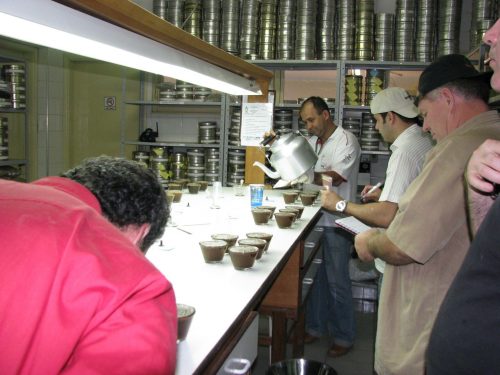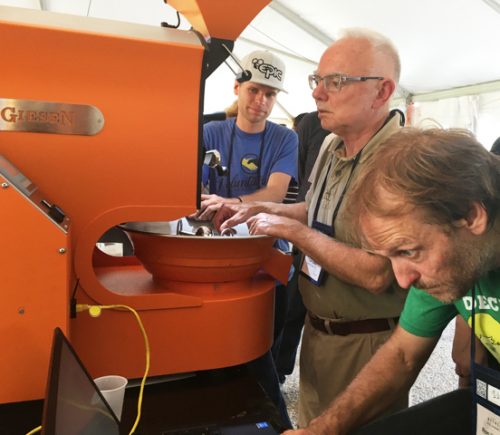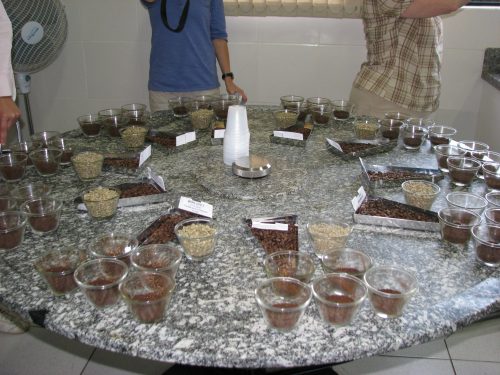Two important influences on coffee’s taste are geography and price. I’d like to take just a moment to discuss each of these a bit.
The wine industry has used the term terrior to describe the effects of soil, sun, rain, and elevation on grapes and the resulting wine. While the attempts to link aspects of coffee and wine often go too far, this similarity has merit. In large part terrior is what makes bright the notes of a Costa Rican differ from earthy Indonesian coffees, half a world away.
Two Costa Ricans can taste much different as well, the distance here measured in a few miles. Weather and soil vary even at close range. Of course other factors influence taste, and will provide future topics of conversation for us.
The old adage says that price and quality go hand-in-hand. Coffee is no exception. For starters, let’s break the bean into two categories “commercial” and “specialty”. While the line between these two general types can blur, fancy – or specialty – brings with it the understanding that the additional care goes into the cultivar, elevation, the position on a hillside; the picking, processing, roasting, and ultimately, the brewing. Understandably, this extra attention costs more.
A price variance that is harder to nail down is what can be made of the difference between, for example, an $8.00 a pound Panama and one that is $16.00. You may even see ratings on coffees: numbers on a scale given for taste qualities: nose, brightness, body, balance, etc. Because taste is subjective, the more “cuppers” participating will generally give a more accurate assessment. So, two Panamanians can have vastly different scores.
Packaging and marketing also influence the $16.00 coffee. Consumers appreciate a story that personalizes where the coffee comes from. If the name of a town or farm or family can be linked to the coffee, all the better. Possibly the farm uses methods that are more kind to the environment, or is circumspect in how it makes economic decisions. The promotion of these features is another factor that helps drive up the price.
Taste, which should be what the coffee drinker really enjoys, sometimes gets lost in the promotion. Coffee Express Co. works to procure the highest grades and the best-tasting lots from all over every country whose coffees we carry, including organics, Fair Trade, and decafs. We’ve kept our eye on the ball for quality over the years, fashioning our production, packaging, and delivery methods to ensure that we supply our retailers with the best coffee available, delivered fresh from the roaster, at affordable prices. You don’t have to overpay for taste.




